#...or not. who in 1999 knew what linux even was
Explore tagged Tumblr posts
Text
when i saw gordon freeman in the mall i thought it was something exclusive to the steam version (being from valve and all), but apparently he's in every version. not that it stopped me from imagining what other platforms would've had in that area instead
switch: obviously mario, maybe ocarina of time link or banjo and kazooie
ps4/5: crash, spyro, or lara croft
xbox: this one's tricky since microsoft wasn't in the console market in 1999. maybe windows 98 posters instead? or just keep gordon since half-life first came out on windows. or some other pc gaming hit at the time (but i mean, half-life was hueg on the pc then so no one would've been more iconic than gordon)
pc (non-steam): probably the same as xbox
ios: well the apple pippin was already dead by 1999 (and who even had one lol), so... imac g3 posters? they're pretty y2k
#warframe#also detect if you're using wine/proton and stick linux stuff#...or not. who in 1999 knew what linux even was#(besides amir of course)
2 notes
·
View notes
Text
System76 Spotlight with Adam Balla

Welcome to the first of an ongoing series where we get to know some of the amazing people behind System76! This week, we kick things off with one of our newest members, Adam Balla (AKA chzbacon), who has just joined the Marketing Team as our Content Producer. Learn what makes his content creation heart go pitter-patter, and why his electric smoker is his must-have cooking appliance.
When did you first become interested in Linux computer systems?
When my roommate introduced me to Slackware in 1999, he was working as a Linux system admin and he really got me interested in Linux. I was going to the Art Institute of Houston at the time for a Multimedia Design degree, and the thought that you could create your own desktop operating system really appealed to me. I didn’t need to stare at the same old tacky operating system I’d used for years.
I found myself, like many nerds of the era, at a Micro Center in the early 2000s rummaging through the discount software bins, trying to snag up multi-CD Linux distributions. This journey exposed me to several of today’s most popular Linux distros. One of those was SUSE Linux 5.3, of which I still keep the tattered book on a bookshelf as a reminder. I did however finally find my place in the world of Debian, which is where I essentially live today. Honestly not much has really changed other than using Pop!_OS as my main distribution—though like any Linux diehard, I still love to download, test, and sometimes install all the Linux.
When did you start becoming a champion for open source hardware and software?
It was a few years after that. Once I got back from the Art Institute and I was working in the area, we needed a server for the screen printing shop that I worked at. Knowing about Linux at that point, I was able to set up a server using consumer-grade gear that we could store all of our artwork and assets on. Moving forward, I set up a server for the newspaper that I worked at for a decade, which I know is still running to this day. After using Linux in that sort of environment and knowing it was good enough for a business, I knew it was good enough for me and my needs.
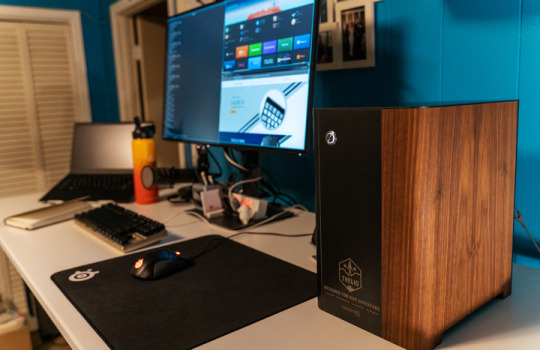
How did you get involved in content creation as a career?
My father was an engineer. When I was young I was always, like most kids, into drawing cars and doodles and cartoons, but I was used to having a drafting table at the house. Computing came around, and my father bought an IBM 486 and one of the original digitizing tablets, and so I got to play around with that. Eventually, he got upset because I was on the computer more than he was, so he bought me an IBM 386 to use.
Around 1995, my dad learned from a coworker about Photoshop. I begged him to get me a copy, and he finally did for Christmas. That’s when I started playing around in Photoshop and really fell into wanting to create for a living. Similar to what my father does, but maybe not as stringent in the decision that I make—no building is going to fall down from my creative process.
And that’s how I got into the whole content creation piece. I created a cover for the album of my high school bands and then started doing work for more local bands. Back then, there were no digital art courses, so I learned a lot by doing and trial/error.
What is your favorite part of the creative process?
Working together as a team during the initial brainstorming process. Going through all of the ideas and details, sometimes writing them down, sometimes not, and even laughing at myself at how ridiculous an idea may sound. I love the process of the very first step. I love to set the vision for the project work from there to turn that vision into reality.
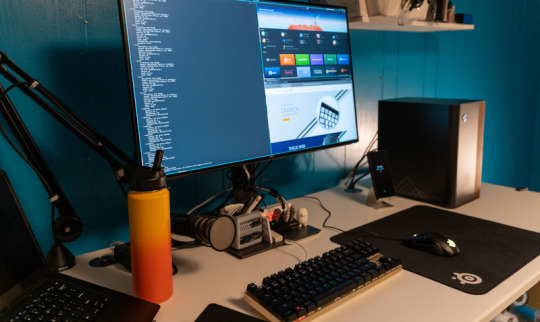
How did you first learn about System76?
I first learned about System76 through Chris Fisher and Jupiter Broadcasting. I believe they were reviewing the Leopard Extreme in 2012, on what at that time was the Linux Action Show. That’s when I started to look at System 76 and their offerings and wondered if it would be better for me to build my own Linux desktop, or adopt something and support the open source community. It’s been a little while since then, and I’ve always kept my eye on System76. Then with the release of Thelio, that really pushed me to the point of, “Wow, these guys are creating their own beautiful custom chassis and they’re incorporating different materials together. What a beautiful machine.”
I was speaking to my wife (financial advisor) about purchasing one in 2019, and I spoke to Emma and some other people at System76 about my desire for one, and I don’t know how, but Emma encouraged me not to buy one! And then I was given the opportunity to come to System76 for the Superfan event, where I was fortunate enough to be one of a dozen people who were gifted a Thelio desktop. It sits on my desk to this day; I even bought a larger desk just so I could put it up there and see it every day. I really appreciate the humble beginnings of System76, and I’m so glad to finally be a part of this amazing team.
Let's get into that creative brain. What is your favorite viral video and/or ad, and why do you love it so much?
I have a few ads that I like. I’ve always liked Honda’s messaging and their ads.
I like these ads because of the way in which they go through their history and lineage and the way that Honda itself has marketed its products as “People First” products—very similar to when they introduced their motorcycles to the US with their “You meet the nicest people on a Honda,” campaign. I think that was in 1962, so this was during the height of the motorcycle gang craze. Then comes this little Japanese motorcycle company and markets their products in a completely opposite image from the rest of the industry. They dared to be different and it paid off for them. Selling over 100 million Honda Cubs since 1958. Being given the title of most produced motor vehicle in the world.
This may come as a surprise to some, but I also really love the original Orwellian-inspired Macintosh commercial, which only aired once during the 1984 Super Bowl. Created by Steve Hayden, Brent Thomas and Lee Clow. In my opinion, these guys really created disruptive advertising, so much so that the ad still resonates today as much as it did then. While I don’t think you need to incite fear to sell a product, it showed that Apple dared to be different.
I’m not sure what constitutes a viral video these days. I’m not sure if it’s having a billion trillion views or just simply infecting one person who saw your video. One that always gives me a chuckle has to be “News Anchor Laughs At Worst Police Sketch Fail”. The honesty on the anchor's face makes me lose it every time.
When you’re not helping to lead the Open Source revolution, what do you like to do with your free time?
I really like going on walks and taking photos. Photography to me is one of the last honest art forms. What you see really is what you get. I love to tinker and make things, I have a 3D printer that my wife and I purchased as a joint valentine’s gift to each other last year. We started using it right when COVID broke out, so we made around 900 face shields which we distributed to schools, day cares, dentist's offices, anyone who needed one. That’s what we did for about the first 6 months when we first got it. Now, my wife loves to print earrings, for example, and I like to build different fun electronics projects.
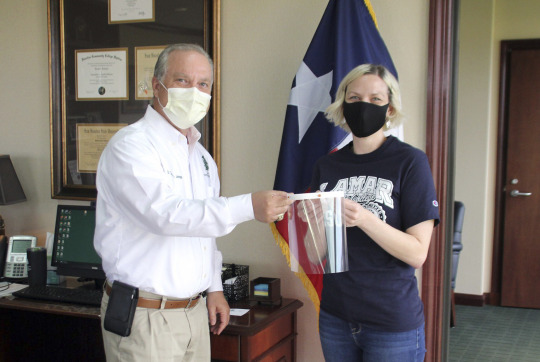
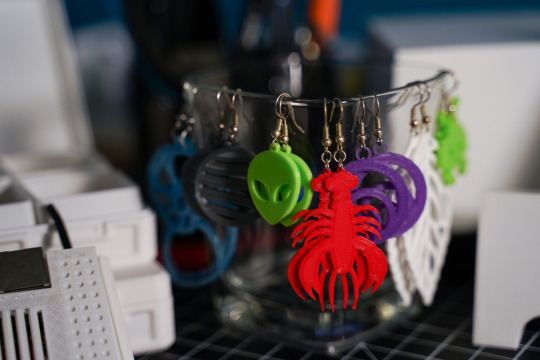
I also love to cook, especially for large groups. I just got done with an Easter Weekend + Birthday celebration where we cooked 100 lbs of crawfish, 10 lbs of pork shoulder, sausage, and boudin (which is basically rice and pieces of pork that have been mixed together with seasonings and then put into a casing like sausage). One of my main requirements actually for a place in Denver is somewhere I can bring my electric smoker. It’s a must-have for any Texan.
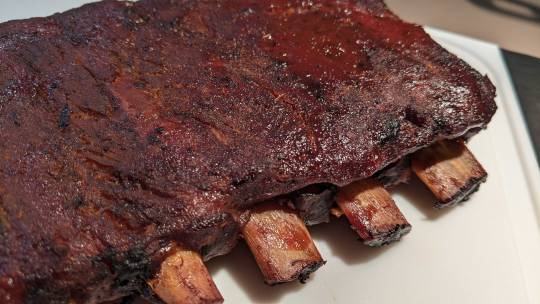
What are you most excited about with your new role here at System76? To help change the computing landscape as we know it today. Into a future where technology is free and open. A world where you're encouraged to break things, fix things, and learn how they work. Aside from changing the world and stuff, I'm really excited to have a chance to work with such an insanely talented group of people.
#system76#open source#content#content creation#linux#hardware#software#firmware#laptops#desktops#servers#Thelio#Pop!_OS#Launch#Adam Balla#chzbacon#Jupiter Broadcasting#meat#nerd#covid 19#Ubuntu#Debian#SUSE#engineering#design#STEM#3d printing#creative#Denver#Texas
9 notes
·
View notes
Text
Twenty-five ways in which MIT has transformed computing
This month MIT is celebrating the launch of the new $1 billion MIT Stephen A. Schwarzman College of Computing. To help commemorate the event, here’s a list of 25 ways in which MIT has already transformed the world of computing technology.
1937: Digital circuits
Master’s student Claude Shannon showed that the principles of true/false logic could be used to represent the on-off states of electric switches — a concept that served as the foundation of the field of digital circuits, and, therefore, the entire industry of digital computing itself.
1944: The digital computer
The first digital computer that could operate in real-time came out of Project Whirlwind, a initiative during World War II in which MIT worked with the U.S. Navy to develop a universal flight simulator. The device’s success led to the creation of MIT Lincoln Laboratory in 1951.
1945: Memex
Professor Vannevar Bush proposed a data system called a “Memex” that would allow a user to “store all his books, records, and communications” and retrieve them at will — a concept that inspired the early hypertext systems that led, decades later, to the World Wide Web.
1958: Functional programming
The first functional programming language was invented at MIT by Professor John McCarthy. Before LISP, programming had difficulty juggling multiple processes at once because it was “procedural” (like cooking a recipe). Functional languages let you describe required behaviors more simply, allowing work on much bigger problems than ever before.
1959: The fax
In trying to understand the words of a strongly-accented colleague over the phone, MIT student Sam Asano was frustrated that they couldn’t just draw pictures and instantly send them to each other — so he created a technology to transmit scanned material through phone lines. His fax machine was licensed to a Japanese telecom company before becoming a worldwide phenomenon.
1962: The multiplayer video game
When a PDP-1 computer arrived at MIT’s Electrical Engineering Department, a group of crafty students — including Steven “Slug” Russell from Marvin Minsky’s artificial intelligence group — went to work creating “SpaceWar!,” a space-combat video game that became very popular among early programmers and is considered the world’s first multiplayer game. (Play it here.)
1963: The password
The average person has 13 passwords — and for that you can thank MIT’s Compatible Time-Sharing System, which by most accounts established the first computer password. “We were setting up multiple terminals which were to be used by multiple persons but with each person having his own private set of files,” Professor Corby Corbato told WIRED. “Putting a password on for each individual user as a lock seemed like a very straightforward solution.”
1963: Graphical user interfaces
Nearly 50 years before the iPad, an MIT PhD student had already come up with the idea of directly interfacing with a computer screen. The “Sketchpad” developed by Ivan Sutherland PhD ’63 allowed users to draw geometric shapes with a touch-pen, pioneering the practice of “computer-assisted drafting” — which has proven vital for architects, planners, and even toddlers.
1964: Multics
MIT spearheaded the time-sharing system that inspired UNIX and laid the groundwork for many aspects of modern computing, from hierarchical file systems to buffer-overflow security. Multics furthered the idea of the computer as a “utility” to be used at any time, like water or electricity.
1969: Moon code
Margaret Hamilton led the MIT team that coded the Apollo 11 navigation system, which landed astronauts Neil Armstrong and Buzz Aldrin ScD ’63 on the moon. The robust software overrode a command to switch the flight computer’s priority system to a radar system, and no software bugs were found on any crewed Apollo missions.
1971: Email
The first email to ever travel across a computer network was sent to two computers that were right next to each other — and it came from MIT alumnus Ray Tomlinson ’65 when he was working at spinoff BBN Technologies. (He’s the one you can credit, or blame, for the @ symbol.)
1973: The PC
MIT Professor Butler Lampson founded Xerox’s Palo Alto Research Center (PARC), where his work earned him the title of “father of the modern PC.” The Xerox Alto platform was used to create the first graphical user interface (GUI), the first bitmapped display, and the first “What-You-See-Is-What-You-Get” (WYSIWYG) editor.
1977: Data encryption
E-commerce was first made possible by the MIT team behind the RSA algorithm, a method of data encryption based on the concept of how difficult it is to factor huge prime numbers. Who knew that math would be why you can get your last-minute holiday shopping done?
1979: The spreadsheet
In 1979, Bob Frankston ’70 and Dan Brickson ’73 worked late into the night on an MIT mainframe to create VisiCalc, the first electronic spreadsheet, which sold more than 100,000 copies in its first year. Three years later, Microsoft got into the game with “Multiplan,” a program that later became Excel.
1980: Ethernet
Before there was Wi-Fi, there was Ethernet — the networking technology that lets you get online with a simple cable plug-in. Co-invented by MIT alumnus Bob Metcalfe ’69, who was part of MIT’s Project MAC team and later went on to found 3Com, Ethernet helped make the Internet the fast, convenient platform that it is today.
1980: The optical mouse
Undergrad Steve Kirsch ’80 was the first to patent an optical computer mouse — he had wanted to make a “pointing device” with a minimum of precision moving parts — and went on to found Mouse Systems Corp. (He also patented the method of tracking online ad impressions through click-counting.)
1983: The growth of freeware
Early AI Lab programmer Richard Stallman was a major pioneer in hacker culture and the free-software movement through his GNU Project, which set out to develop a free alternative to the Unix OS, and laid the groundwork for Linux and other important computing innovations.
1985: Spanning tree algorithm
Radia Perlman ’73, SM ’76, PhD ’88 hates when people call her “the mother of the Internet,” but her work developing the Spanning Tree Protocol was vital for being able to route data across global computer networks. (She also created LOGO, the first programming language geared toward children.)
1994: The World Wide Web consortium (W3C)
After inventing the web, Tim Berners-Lee joined MIT and launched a consortium devoted to setting global standards for building websites, browsers, and devices. Among other things, W3C standards ensure that sites are accessible, secure, and easily “crawled” for SEO.
1999: The birth of blockchain
MIT Institute Professor Barbara Liskov’s paper on Practical Byzantine Fault Tolerance helped kickstart the field of blockchain, a widely used cryptography system. Her team’s protocol could handle high-transaction throughputs and used concepts that are vital for many of today’s blockchain platforms.
2002: Roomba
While we don’t yet have robots running errands for us, we do have robo-vacuums — and for that, we can thank MIT spinoff iRobot. The company has sold more than 20 million of its Roombas and spawned an entire industry of automated cleaning products.
2007: The mobile personal assistant
Before Siri and Alexa, there was MIT Professor Boris Katz’s StartMobile, an app that allowed users to schedule appointments, get information, and do other tasks using natural language.
2012: EdX
Led by former CSAIL director Anant Agarwal, MIT’s not-for-profit online platform with Harvard University offers free courses that have drawn more than 18 million learners around the globe, all while being open-source and nonprofit.
2013: Boston Dynamics
Professor Marc Raibert’s spinoff Boston Dynamics builds bots like “Big Dog” and “Spot Mini” that can climb, run, jump and even do back-flips. Their humanoid robot Atlas was used in the DARPA Robotics Challenge aimed at developing robots for disaster relief sites.
2016: Robots you can swallow
CSAIL Director Daniela Rus’ ingestible origami robot can unfold itself from a swallowed capsule. Using an external magnetic field, it could one day crawl across your stomach wall to remove swallowed batteries or patch wounds.
Twenty-five ways in which MIT has transformed computing syndicated from https://osmowaterfilters.blogspot.com/
0 notes